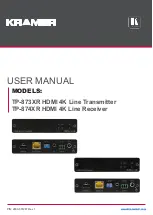
AR5000 OPERATING MANUAL PAGE 75
(21) Propagation - short wave bands
VHF and UHF transmissions generally only propagate
relatively short distances when compared to short wave
signals. For all intensive purposes they may be considered
as line-of-sight plus a bit.
Where as point-to-point communication between mobile
users or when in built up areas may only be a couple of
kilometres, aircraft at heights of 9,000 metres may be
heard at a much greater distance (50 to 300 kilometres
or more with the right conditions).
Occasionally tropospheric weather conditions or
sporadic E layer ionisation enable VHF-UHF signals to
travel many hundreds of kilometres.
Unlike VHF and UHF transmissions which generally
propagate only on a localised basis (to the horizon plus a
small amount), short wave transmissions may travel for
many thousands of kilometres. Depending upon the
frequency in use, time of day, season of the year and sun
spot activity, transmissions may propagate completely
around the world.
Radio signals are electromagnetic waves very similar to
light beams. As such they do not readily follow the
curvature of the Earth but attempt to travel out into space.
The ionosphere
Luckily the frequency spectrum of short wave is often
reflected back down to Earth by the upper layer of the
Earth’s atmosphere called the ionosphere.
When the reflected signals reach the Earth again they
may either be received or reflected back up into space. If
lucky, they will be reflected by the ionosphere yet again
down toward the Earth providing reception into another
and possibly more distant location.
The ionosphere is constructed of many layers of ionised
gas. Of particular interest to short wave listeners’ are the
lower E and upper F1 & F2 layers although a lower D
layer exists during day time.
D layer
During day time the lower D layer forms around 60 to 80
kilometres above the Earth’s surface. This D layer tends
to absorb low frequencies reducing the distance covered
by medium wave transmissions. In the night time when
the D layer dissipates, medium and low frequency
transmissions may propagate over much greater
distances.
If the transmitted frequency is too high to be reflected by
the ionosphere,
or the angle too steep, transmissions will simply pass
straight though the ionosphere without being reflected and
will travel upward to the next ionosphere layer.
E layer
Above the D layer is the E layer located at a height of
about 100 kilometres. The E layer tends not to absorb
signals as much as the D layer but refracts some signal
back to Earth where it may be received some distance
from the original point of transmission.
Usually in Spring and Autumn, SPORADIC E propagation
consisting of dense pockets of E layer ionosphere, reflect
even the higher VHF and UHF transmissions causing
patterning on television sets. This is to the delight of Radio
Amateurs who are then able to communicate for many
hundreds and even thousands of kilometres on frequency
bands usually capable of only local reception.
Occasionally a similar effect can be caused by
temperature inversion layers creating tropospheric
propagation selectively ducting transmissions between
two points. Tropospheric propagation is usually applicable
to the higher VHF and UHF bands.
F1 & F2 layers
During the day time there are two upper layers of the
ionosphere, these being the F1 layer at about 200
kilometres and the F2 layer at about 400 kilometres. As
evening falls, these layers combine to form a single F layer.
It is F layer propagation that is largely responsible for short
wave propagation over great distances.
The density of the ionosphere layers varies depending
upon season, time of day and sunspot activity which is
believed to follow an eleven year cycle of good and bad
propagation conditions.
You will note that large areas of the Earth’s surface lays
between the point of transmission and reflection, in this
area there will be little or no reception. For this reason F
layer propagation is often referred to as SKIP and the
reflected signal as SKY WAVE.
Generally speaking only frequencies below 30MHz are
reflected by the ionosphere. Higher frequencies pass
straight through even the F layers and will continue outward
into space for ever.
Choice of frequency
Depending upon the time of day and desired skip distance,
different frequencies will be selected by Radio Amateurs
and Commercial users such as Oceanic Air Traffic, short
wave broadcast...
For instance the MUF (Maximum Usable Frequency) is
often stated for a path between two locations. Choosing
a frequency above the MUF will not produce results as






































